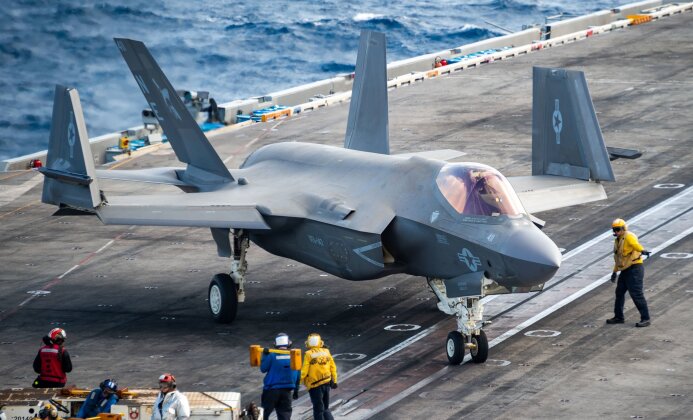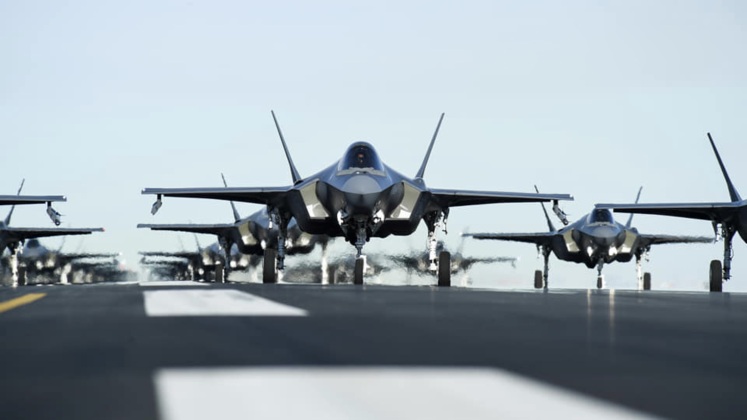On January 24th after a “landing mishap” on the U.S. Navy aircraft carrier USS Carl Vinson a new F-35C Lightning II stealth fighter was lost into the South China Sea during routine operations in the area. This marked the third loss of an F-35 at sea with a British F-35B having crashed in the Mediterranean shortly after launch in November and a Japanese F-35A previously disappearing over the East China Sea in 2019. The vastness of the South China Sea, and the large presence of the Chinese People’s Liberation Army (PLA) in the region, has raised the possibility that the F-35 could fall into Chinese hands should it not be recovered or destroyed quickly by U.S. forces. This would be a particularly significant blow to the U.S. and its clients considering the size of the F-35 program and the likely very significant benefits which China and its defence partners could gain from studying the airframe. The F-35 is built around a radar cross section reducing stealth airframe, and those deploying near enemy territory such as on patrols in Eastern Europe have deployed special luneberg lenses to nullify their stealth capabilities and prevent enemy air defences from studying their profiles and learning how best to counter their stealth capabilities. An F-35 in the hands of China or others would be particularly detrimental to U.S. interests because it would provide very considerable opportunities to study the airframe’s stealth features and develop countermeasures, potentially seriously undermining the fighter’s primary advantage over advanced fourth generation aircraft such as the F-16 Block 70. A precedent to such a study was the reported Russian study of the remains of an F-117 stealth airframe after one was shot down over Yugoslavia in 1999.

The possibility of an F-35 being lost to an adversary is hardly unprecedented, the most serious preceding case being the loss of a Japanese F-35A in April 2019. When asked regarding the possibility that Russia or China could recover the Japanese aircraft at sea, retired U.S. Air Force Lt. General David Deptula stated at the time: “bottom line is that it would not be good…. There is no price too high in this world for China and Russia to pay to get Japan’s missing F-35, if they can. Big deal.” The F-35 program’s total costs are estimated at over $1.7 trillion dollars, and with over 2,500 expected to be built at a conservative estimate obtaining a single fighter would be highly valuable to potential adversaries including not only China, but also North Korea, Russia, Iran and others with which the PLA could share information gained from studying the airframe. This would be important not only due to how widely the fighter is used and the scale on which it is built, but also the extent to which it is relied on. The fighter is the only one with fifth generation capabilities in production in the western world, and one of just two in the world being produced and fielded at squadron level strength alongside the Chinese J-20. It was for many years the only fighter being acquired by the U.S. Air Force, and other than the F-X sixth generation fighter remains essentially America’s only known investment in next generation manned fighter aviation.

Beyond the benefits of studying its stealth capabilities, the F-35’s electronics, electronic warfare systems, sensors and communications systems could seriously compromise all its operators if a single fighter fell into the PLA’s hands, potentially forcing significant changes to electronics for future production models and a rush to modify those currently in service. This would mirror the responses the Soviet Union had to take when its own combat jets, particularly the MiG-23 and MiG-31, were compromised the former by an illegal Egyptian sale to the U.S. and the latter through espionage. The F-35C is the latest variant of the F-35 to enter service, joining the U.S. Navy only from 2019, and represents a conservative adaptation of the F-35A airframe for conventional carrier based takeoffs with folding wings, strengthened landing gear, an arrestor hook and longer wings for better manoeuvrability. Studying the fighter could potentially benefit China’s own promising program to develop a carrier based stealth fighter based on the Shenyang Aircraft Manufacturing Company’s FC-31 fighter. The Chinese rival to the F-35C, which remains unnamed, was first seen flying in October 2021.
